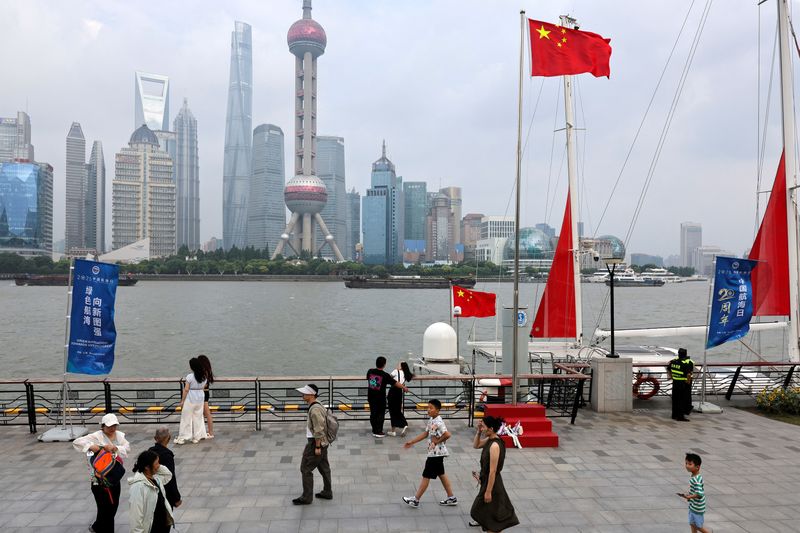Analysis: Beneath China's Strong Economy, Pay Cuts and Side Gigs

The Struggle of Workers in China's Economic Shift
In Beijing, Zhang Jinming, an employee of a Chinese state-owned enterprise, has found himself working late nights delivering food to make up for a 24% reduction in his monthly salary. This part-time job, which he does after work and on weekends, is a necessity rather than a choice. He admits that being a delivery driver while employed by a state firm isn't considered respectable. His salary, now at 4,200 yuan ($585), is down from 5,500 yuan before the cut. Each evening, he earns between 60 to 70 yuan, riding his scooter until 11:30 pm.
Zhang’s situation reflects a broader trend where workers are forced to take on additional jobs to cope with wage cuts. Despite China's economic growth of 5.2% in the second quarter, driven by its export-heavy model, underlying issues are becoming more apparent. The lack of real demand is causing profits to shrink, leading companies to reduce costs, often at the expense of their employees.
The pressure on workers is not isolated to Zhang. In Chongzuo, a city near the Vietnam border, Frank Huang, a 28-year-old teacher, has not received his salary for two to three months. He relies on help from parents when his paycheck doesn’t arrive. If he were married with a mortgage and other financial obligations, the pressure would be unbearable. Another teacher from Linquan, a rural county, receives only her basic salary, with performance-based pay consistently delayed. She finds it difficult to cover even basic expenses, feeling as though she is begging for survival.
These challenges highlight a growing issue in China's economy, where payment delays are increasing across various sectors. In industries like computer, communication, and electronic equipment, and in auto manufacturing, arrears have risen significantly. This liquidity stress is a result of policies that prioritize output over demand, according to economists.
The Impact on Consumer Spending
With incomes under pressure, consumer spending is being deferred, making it challenging for Beijing to meet its goal of boosting household consumption. The trade tensions between the U.S. and China have further complicated this situation. Huang Tingting, a 20-year-old waitress, lost her job when business at her restaurant plummeted during the height of the trade tensions. The restaurant owner asked staff to take unpaid leave days, forcing her to quit. Finding a new job has been difficult, with more candidates competing for fewer positions.
This shift in the job market is affecting many young workers who previously could find employment quickly. Now, the competition is fiercer, and the job market is proving to be worse than the previous year. The impact of these economic pressures is widespread, affecting not just individual workers but also the overall economic stability of the country.
Economic Challenges and Future Outlook
Economists warn that without significant changes, China's economy may face slower growth in key sectors. The current policies favoring exporters over consumers are creating a dual-speed economy, with strong industrial growth but weak consumer demand. This imbalance is leading to deflationary pressures and reduced profitability in manufacturing and technology sectors.
Max Zenglein, Asia-Pacific senior economist at the Conference Board of Asia, highlights that the challenges faced by China are closely tied to the ongoing trade war with the U.S. These issues are beginning to affect domestic economic conditions, creating a ripple effect throughout the economy.
As the situation continues to evolve, the need for policy adjustments becomes increasingly evident. Redirecting support to domestically focused sectors such as education and healthcare, or enhancing welfare programs, could help stimulate household consumption and prevent a potential slowdown in the latter half of the year.
The road ahead for China's economy is complex, requiring careful navigation to address the challenges of wage cuts, payment delays, and shifting consumer behavior. The resilience of the economy remains a topic of concern, with the need for sustainable growth strategies becoming more urgent.
Post a Comment for "Analysis: Beneath China's Strong Economy, Pay Cuts and Side Gigs"
Post a Comment